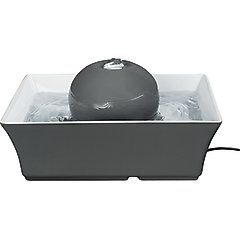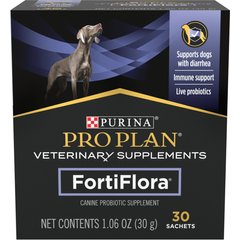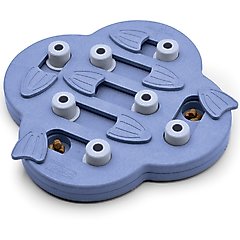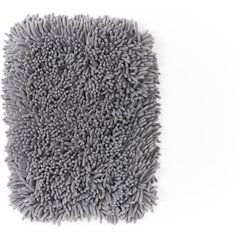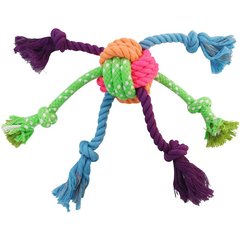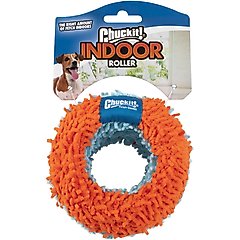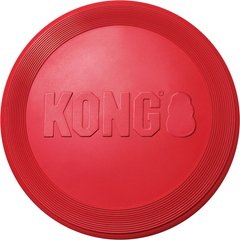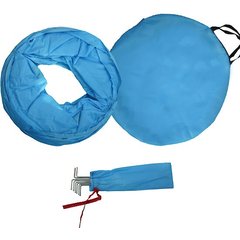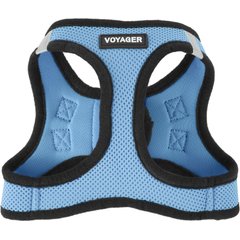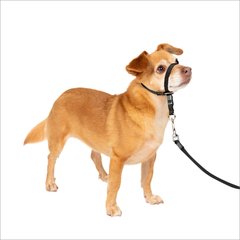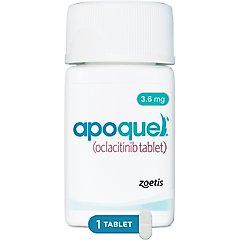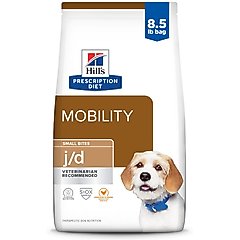What Are Steroids for Dogs? What Are They Used For?

Photo by Chewy
Steroids for dogs are common prescription medications that can treat a range of health conditions and diseases. But what are they and how do they work, exactly?
We talked with veterinarians to learn more about what steroids are, common types of steroids, and how to care for a dog taking steroids at home.
Key Takeaways
- Steroids are prescribed to reduce inflammation and treat immune-related conditions in dogs.
- Side effects can include increased thirst, appetite, and risk of infection.
- Not all steroids are the same—each has specific uses and risks.
- Always follow your veterinarian’s dosage and tapering instructions to avoid complications.
What Are Steroids for Dogs?
“Steroids for dogs are medications that mimic the effects of naturally occurring hormones in the body; help reduce inflammation and suppress the immune system when needed; or replace deficient hormones,” says Michelle Dulake, DVM, co-founder and CEO of Fera Pets, in Los Angeles.
Steroids are generally used to help with conditions such as:
- Allergies
- Inflammation
- Certain autoimmune diseases
Steroids work by blocking the body’s inflammatory response, which helps ease symptoms and gives your dog some relief, says Dr. Dulake.
Vets may prescribe steroids to treat:
- Itchy skin from allergies (e.g., atopic dermatitis, flea allergy dermatitis, food allergies)
- Ear infections
- Autoimmune conditions (e.g., immune-mediated anemia)
- Certain types of cancer
- Swelling in the body
What Are the Side Effects of Steroids for Dogs?
Steroids can cause a variety of side effects, especially with long-term use or high doses, says Bethany Hsia, DVM, mobile veterinarian and co-founder of CodaPet in Clovis, California.
While side effects can vary based on the type of steroid, common side effects of steroids for dogs include:
- Increased thirst
- Increased urination
- Increased appetite
- Panting
- Weight gain
- Changes in behavior
- Changes in skin (e.g., hair loss, thinning skin, bumps, or pustules on the skin)
- Pot-bellied appearance (with long-term use)
Dogs with the following steroid side effects should see a veterinarian right away, as these may indicate gastrointestinal ulcers:
- Vomiting
- Weakness
- Black, tarry stools
7 Types of Steroids for Dogs
There are several types of steroids for dogs that have their own unique benefits and can be used to treat several different conditions. They include:
- Glucocorticoids
- Progestins
- Adrenal cortical steroids
- Mineralocorticoids
- Anabolic steroids
- Androgens
- Estrogens
“Prednisone is the most common [steroid], and it suppresses immune overreactions in conditions like allergies, asthma, or autoimmune disorders,” says Sabrina Kong, DVM, certified canine rehabilitation practitioner at Jules Veterinary Center in Tracy, California, and veterinary consultant at WeLoveDoodles.com.
However, for dogs on prednisone, side effects may include increased thirst and appetite, panting, and weight gain within days of starting treatment.
Long-term use (i.e., more than three months) risks diabetes, Cushing’s syndrome, or stomach ulcers, she adds.
How To Care for a Dog Taking Steroids at Home
If your vet has prescribed steroids for your dog, there are several ways to prioritize their well-being and manage potential side effects.
Our experts share these tips on how to care for your dog on steroids at home to keep them healthy and happy.
Provide Constant Access to Fresh Water
To manage excessive thirst, offer your pooch fresh water, ice cubes, or wet food.
Water fountains like the PetSafe Drinkwell Seascape Ceramic Fountain and elevated water bowls like the Waggo Uplift Elevated Ceramic Bowl can help keep your dog hydrated.
Recommended Products
Be sure to track your dog’s water intake: Consuming more than 100 ml/kg per day warrants urgent vet review for diabetes, Dr. Kong says.
Administer Steroids With a Meal
Always make sure your dog has eaten prior to taking their steroids. Steroids should never be taken on an empty stomach to avoid risks, like an upset stomach.
If panting or nausea occurs, let your vet know right away. They may want to make changes to your pet’s medication or add treatments to ease stomach upset, like sucralfate or omeprazole.
Recommended Product
Support Their Digestion
Because steroids may affect gut health, ask your veterinarian about supplementing your dog’s diet with probiotics, like Purina Pro Plan FortiFlora probiotic supplements.
Recommended Product
Feed a Balanced Diet and Use Slow Feeder Bowls and Puzzle Feeders
Maintaining a balanced diet encourages a healthy weight in your dog.
If your pup tends to eat quickly, Dr. Kong recommends using slow feeder dog bowls, like the Frisco Bone Shaped Slow Feed Bowl, to prevent bloat, and hiding your pup’s kibbles in a puzzle feeder, like Nina Ottosson by Outward Hound Dog Hide N Slide Dog Toy, or a snuffle mat, like Pet Parents Forager Slow Feeder Cat & Dog Snuffle Mat & Feeding Mat.
These enrichment feeders help your pup have fun and mental exercise while promoting slower eating.
Recommended Products
Skip Dog Parks and Other Pet-Friendly Places
Dogs taking steroids are more susceptible to infections. For this reason, you should avoid public places, like dog parks and pet stores, to avoid exposure to sick animals and keep your furry friend safe.
The good news: You can bring the fun indoors with plenty of opportunities for playtime and enrichment with toys like the Frisco Fetch Colorful Ball Knot Rope or Chuckit! Indoor Roller Dog Toy, and puzzles like the Brightkins Brain Teaser Treat Puzzle Dog Toy.
Recommended Products
Allow Regular Exercise
When your dog is on steroids, provide regular exercise but avoid overexertion, especially if they’re experiencing muscle weakness, Dr. Hsia says.
Your canine companion can enjoy light to moderate exercise and lots of enrichment with games—like soccer with the SunGrow Interactive Outdoor Play Soccer Ball or flying disc fun with the KONG Classic Flyer—and agility training with the HDP Collapsible Agility Dog Training Tunnel.
Recommended Products
Keep Them Comfortable
Certain supplies can help keep your dog feeling comfortable during steroid treatment.
For example, providing cool mats like the The Green Pet Shop Cool Pet Pad can ease panting, while using harnesses, like the Best Pet Supplies Voyager Dog Harness, or headcollars, like the PetSafe Gentle Leader Padded No Pull Dog Headcollar, instead of collars can reduce tracheal pressure, Dr. Kong says.
Recommended Products
Check Your Dog’s Gums Daily
Steroids can mask infection signs, so it’s crucial to check your dog’s gums daily for redness, Dr. Kong says.
Work Closely With Your Vet
While your dog is on steroids, Dr. Hsia recommends the following tips:
- Watch for changes in your dog’s behavior, appetite, thirst, urination, or overall health.
- Don’t stop the medication abruptly. Follow your veterinarian’s instructions for tapering the dose.
- Work closely with your vet to manage your dog’s steroid treatment effectively and minimize potential side effects.
FAQs About Steroids for Dogs
Are steroids bad for dogs?
No, not all steroids are bad for dogs, but it’s important to understand that steroids should only be given to dogs under direct supervision by their veterinarian.
In some cases, steroids may not be a good option for dogs with certain infections, diabetes, or those prone to stomach ulcers, Dr. Dulake says.
It’s best to consult your vet to learn whether steroids are right for your dog based on their individual needs.
Are steroids safe for dogs?
Yes, steroids can be safe for dogs when used correctly under a vet’s guidance, Dr. Dulake says. They often bring fast relief, but they aren’t without risks.
It’s always important to follow your vet’s instructions closely, and never stop steroids suddenly without guidance.
How long can a dog stay on steroids?
A dog can safely stay on steroids for short-term issues, like bee stings, Dr. Kong says.
For chronic conditions, like irritable bowel disease (IBD), veterinarians aim for the lowest effective dose and monitor blood work monthly. Risks escalate beyond six months, with some dogs developing Cushing’s disease, ligament tears from muscle weakening, and liver enzyme elevations.
It’s crucial to taper off steroids over a period of time or as recommended by your vet to avoid life-threatening adrenal gland issues.
Can steroids make dogs tired or hyper?
Yes, steroids can make dogs tired or hyperactive, depending on the type of steroid, its side effects, and the dog’s individual response to the medication.
Can steroids cause long-term damage in dogs?
It depends. Prolonged use of steroids can lead to side effects, such as increased risk of infection, worsening of diabetes due to increased sugar levels, muscle wasting and weakness, and increased risk of certain cancers, Dr. Hsia says.
Additionally, a dog’s adrenal glands may stop producing natural cortisol, making them unnaturally dependent on the steroid.
Are there alternatives to steroids for dogs?
Yes, there are alternatives to steroids for dogs, but it depends on what condition is being treated, Dr. Dulake says.
For example, medications like Apoquel or Cytopoint can target itching without the broad immune suppression of steroids, while nonsteroidal anti-inflammatory drugs (NSAIDs), joint supplements, omega-3s, prescription joint diets like Hill’s Prescription Diet j/d Joint Care, pain-relieving injection like Librela, or anti-osteoarthritis injections like Adequan Canine anti-inflammatory medications can be used for joint pain, she notes.
Recommended Products
Reach out to your vet if your dog has conditions that make steroid use risky—or if you’re looking for long-term management options.
